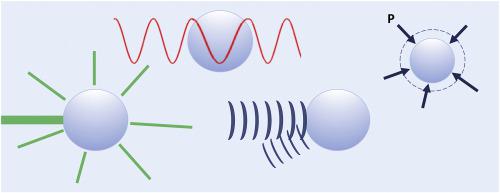Current Opinion in Colloid & Interface Science ( IF 7.9 ) Pub Date : 2021-02-08 , DOI: 10.1016/j.cocis.2021.101427 Fredrik Eklund , Muidh Alheshibri , Jan Swenson

|
History has shown that it is not as easy as one might think to differentiate between bulk nanobubbles and nanodroplets or nanoparticles. It is generally easy to detect colloids (i.e. something that looks different, e.g. scatters light differently than its surrounding solvent), but less easy to determine the nature of these colloids. This has led to misinterpretations in the literature, where nanodroplets or nanoparticles have mistakenly been assumed to be nanobubbles. In this paper, we review a multitude of experimental methods and approaches to prove the existence of bulk nanobubbles. We conclude that combinations of optical detection with physical perturbations such as pressure or ultrasound, or phase-sensitive holographic methods are the most promising and convenient approaches.
中文翻译:

从纳米液滴和纳米颗粒中区分出大量的纳米气泡
历史表明,要区分块状纳米气泡和纳米液滴或纳米颗粒并不像想象的那么容易。通常很容易检测到胶体(即看起来不同的东西,例如与周围的溶剂散射的光线不同),但是不太容易确定这些胶体的性质。这导致了在文献中的误解,其中将纳米液滴或纳米颗粒错误地假定为纳米气泡。在本文中,我们回顾了多种实验方法和方法来证明本体纳米气泡的存在。我们得出结论,将光学检测与物理扰动(例如压力或超声)或相敏全息方法相结合是最有前途和便捷的方法。











































 京公网安备 11010802027423号
京公网安备 11010802027423号